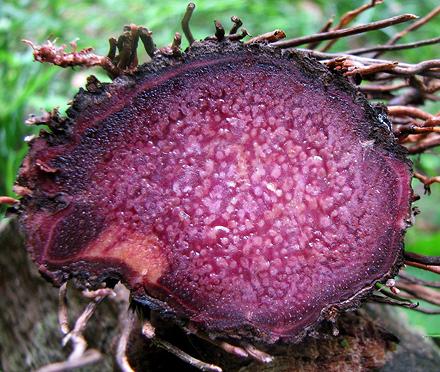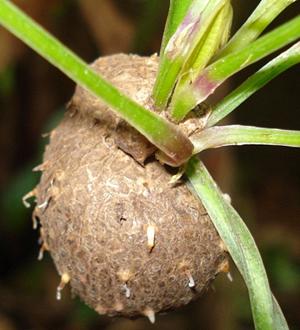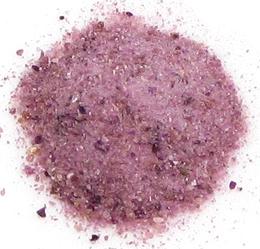 [Violet Yam, Water Yam (white varieties); Ube, Halaya (Philippine);
Ratalu (India); Rasa valli kilangu (Tamil); Uhi (Hawaii); Ji, Ji abana,
Isu ewura (Nigeria); Dioscorea alata]
[Violet Yam, Water Yam (white varieties); Ube, Halaya (Philippine);
Ratalu (India); Rasa valli kilangu (Tamil); Uhi (Hawaii); Ji, Ji abana,
Isu ewura (Nigeria); Dioscorea alata]
Native to Southeast Asia, there are many cultivars of this yam, varying from deep purple to white. Intensely purple varieties are very popular through South and Southeast Asia, particularly the Philippines, while most grown in Africa are white. These are the most common yam in Africa, but are little available in North American markets, even in Los Angeles with our large Philippine population. They are listed as noxious weeds in a few southeastern states, particularly Florida. The purple color comes from anthocyanin flavonoids, which have antioxidant properties, but how well these survive digestion is debatable. Photo by Deepugn at Malayalam Wikipedia contributed to the Public Domain.
These plants also produce tiny "air potatoes" at the bases of their leaves. If these fall to the ground they will start new plants. these potatoes are not considered as good as the mature root tubers, but are convenient to gather and used where these plants grow in profusion.
More on Yams.

In West Africa, particularly Nigeria, white varieties (Water Yam) are used rather than purple. These are not easy to find in North America, but are quite popular in West Africa. They are sweeter and much more mucilaginous than the White Yam, so their usage is somewhat different. Photo by Aruna at Malayalam Wikipedia distributed under license Creative Commons Attribution-ShareAlike v3.0 Unported.
The Japanese Nagaimo Yam is also mucilaginous, but I don't know if it would be a suitable substitute because I haven't acquired a Water Yam yet to compare it to. The Nagaimo is easily available in Asian markets here in Los Angeles.

This flour is used in the Philippines as a coloring to produce purple
Lumpia wrappers, purple ice cream, purple puddings, etc. It is available
from Philippine markets here in Los Angeles, but at a high price. The
photo specimen (1/4 teaspoon) came from a 4.05 ounce packet purchased
for 2019 US $4.99. Ingred: dried purple yam. The store had another brand
at a little lower price, but it was a much lighter color.